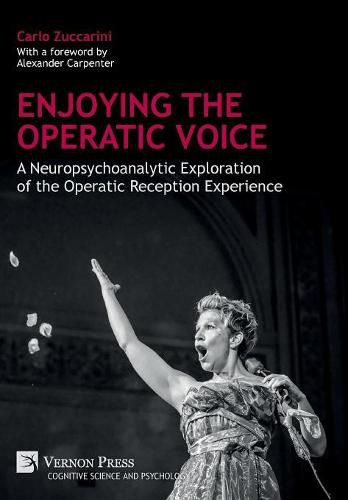Readings Newsletter
Become a Readings Member to make your shopping experience even easier.
Sign in or sign up for free!
You’re not far away from qualifying for FREE standard shipping within Australia
You’ve qualified for FREE standard shipping within Australia
The cart is loading…






This title is printed to order. This book may have been self-published. If so, we cannot guarantee the quality of the content. In the main most books will have gone through the editing process however some may not. We therefore suggest that you be aware of this before ordering this book. If in doubt check either the author or publisher’s details as we are unable to accept any returns unless they are faulty. Please contact us if you have any questions.
There has been a long-standing and mutually-informing association between psychoanalysis, literature and the arts. Surprisingly, given the oral/aural basis of the ‘talking cure’, music has largely been overlooked by psychoanalysis. Notably, neuroscientific research investigating music reception and production has been steadily increasing in range and scope over the years. However, in order to avoid confounding factors, empirical studies have focused primarily on non-vocal music. Remarkably, operatic vocal music has not featured prominently in either field. Yet the multi-dimensional, multi-layered nature of opera, which fuses together a number of different arts, would appear to provide fertile soil for both disciplines.
This book aims to fill that gap, providing a stepping stone for further research. It leverages the individual strengths of psychoanalysis and neuroscience both separately and jointly as the inter-discipline of neuropsychoanalysis. By combining various theories of mind with knowledge about music processing in the brain, this book comprehensively examines the operatic reception experience, providing an account in subjective as well as objective terms. It explores the bittersweet enjoyment of operatic vocal music, which can literally move an operaphile to tears. The explanation for this may be found in a number of subjective dynamics that are unique to the reception of opera, rather than in any distinct objective neural processes, which are common to the reception of all music. These subjective dynamics, which are recruited during neural processing, are triggered by the equally unique features of the operatic voice, in combination with a number of auxiliary elements that are specific to opera. This book will be of interest to academics in a broad range of science and arts disciplines related to music perception and performance, such as music psychology and operatic performance. It may also appeal to passionate operaphiles who wish to understand what drives their addiction!
$9.00 standard shipping within Australia
FREE standard shipping within Australia for orders over $100.00
Express & International shipping calculated at checkout
This title is printed to order. This book may have been self-published. If so, we cannot guarantee the quality of the content. In the main most books will have gone through the editing process however some may not. We therefore suggest that you be aware of this before ordering this book. If in doubt check either the author or publisher’s details as we are unable to accept any returns unless they are faulty. Please contact us if you have any questions.
There has been a long-standing and mutually-informing association between psychoanalysis, literature and the arts. Surprisingly, given the oral/aural basis of the ‘talking cure’, music has largely been overlooked by psychoanalysis. Notably, neuroscientific research investigating music reception and production has been steadily increasing in range and scope over the years. However, in order to avoid confounding factors, empirical studies have focused primarily on non-vocal music. Remarkably, operatic vocal music has not featured prominently in either field. Yet the multi-dimensional, multi-layered nature of opera, which fuses together a number of different arts, would appear to provide fertile soil for both disciplines.
This book aims to fill that gap, providing a stepping stone for further research. It leverages the individual strengths of psychoanalysis and neuroscience both separately and jointly as the inter-discipline of neuropsychoanalysis. By combining various theories of mind with knowledge about music processing in the brain, this book comprehensively examines the operatic reception experience, providing an account in subjective as well as objective terms. It explores the bittersweet enjoyment of operatic vocal music, which can literally move an operaphile to tears. The explanation for this may be found in a number of subjective dynamics that are unique to the reception of opera, rather than in any distinct objective neural processes, which are common to the reception of all music. These subjective dynamics, which are recruited during neural processing, are triggered by the equally unique features of the operatic voice, in combination with a number of auxiliary elements that are specific to opera. This book will be of interest to academics in a broad range of science and arts disciplines related to music perception and performance, such as music psychology and operatic performance. It may also appeal to passionate operaphiles who wish to understand what drives their addiction!